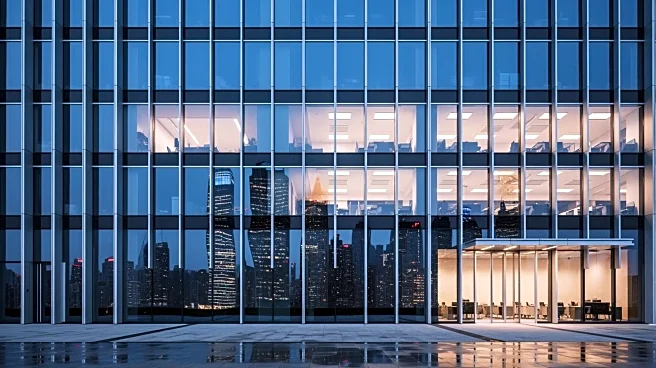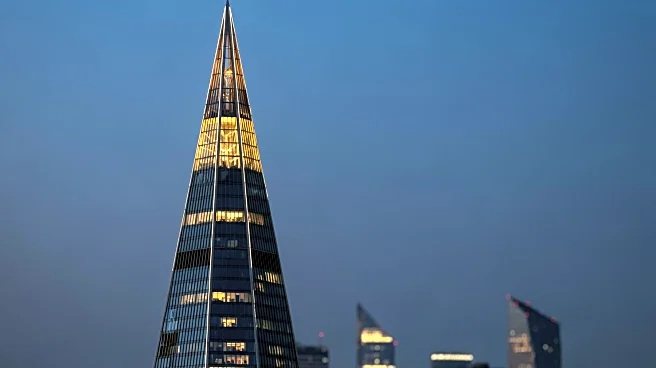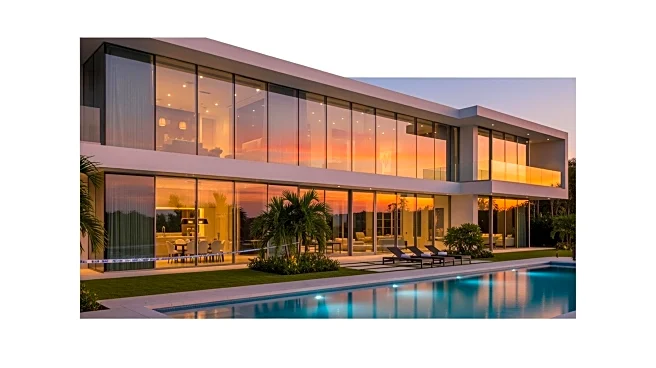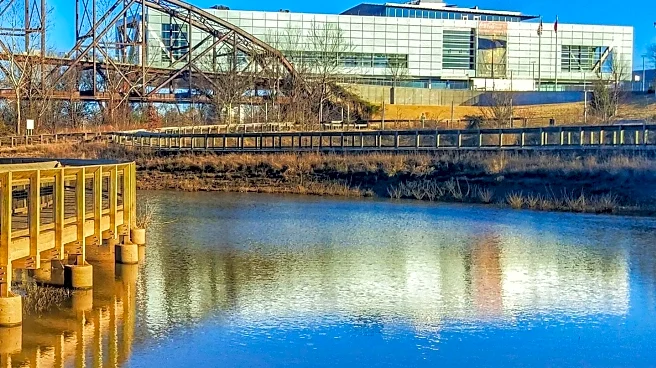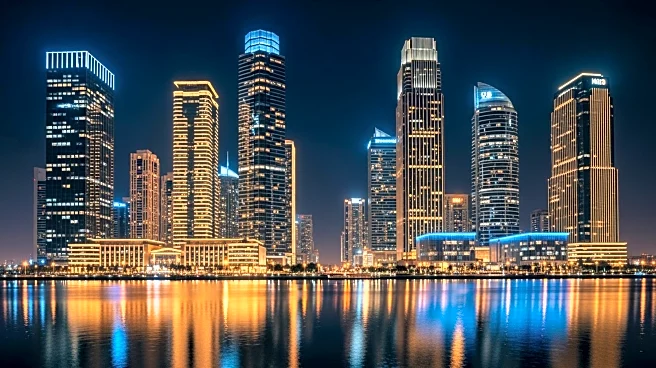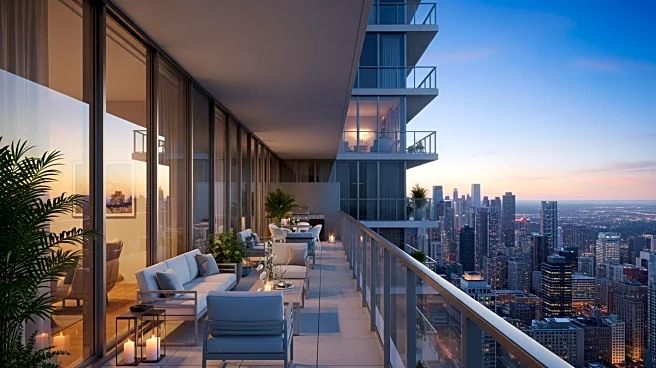What's Happening?
A historic compound in Tribeca, connected by the famed Staple Street skybridge, is on the market for $29.99 million. The property, known as the Footbridge Mansion, includes two buildings linked by the skybridge, offering
a total of 8,300 square feet. The listing features a four-story red mansion with a private rooftop terrace and a loft across the street, along with a private three-car garage and over 4,000 square feet of air rights. Originally part of New York Hospital, the skybridge was used to transport patients between buildings. The property is noted for its architectural flexibility and historical significance.
Why It's Important?
The listing of the Footbridge Mansion highlights the unique architectural heritage of New York City and the value placed on historical properties. The skybridge, a rare feature, adds significant appeal to the compound, attracting potential buyers interested in distinctive real estate. This sale could influence the market for historic properties, emphasizing the importance of preserving architectural landmarks while integrating modern amenities. The compound's availability presents a rare opportunity for buyers to own a piece of New York's architectural history, potentially driving interest from high-profile investors and real estate enthusiasts.
What's Next?
The sale of the Footbridge Mansion may prompt increased interest in similar historic properties, potentially leading to more listings of unique architectural sites. Real estate agents and developers might focus on marketing the historical and architectural significance of such properties to attract buyers. Additionally, the transaction could inspire discussions on the preservation of historic structures in urban environments, balancing modern development with the conservation of cultural heritage. As interest in unique real estate grows, there may be further exploration of innovative ways to utilize and maintain historic properties.
Beyond the Headlines
The listing of the Footbridge Mansion could spark broader conversations about the role of historic architecture in urban identity and community development. As cities evolve, preserving architectural landmarks can contribute to cultural continuity and community pride. The property's unique features, such as the skybridge, may also inspire architectural innovation, encouraging designers to incorporate historical elements into modern projects. This trend could lead to a renaissance in urban design, where historical preservation and contemporary functionality coexist harmoniously.


